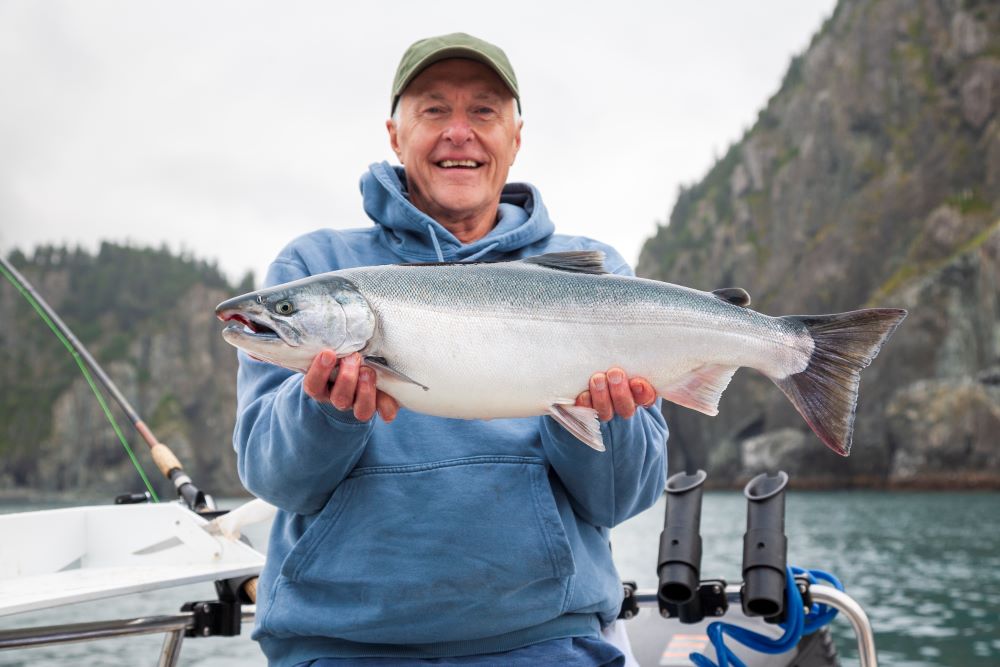
Having taken a look at both Chinook and sockeye it’s only fitting that we offer a primer on the final wild salmon species that runs on the Copper River: coho salmon.
It’s tempting to think that salmon is salmon, but that isn’t true. Wild salmon tastes better and offers more nutritional benefits than farmed salmon. Each species is different in size, appearance, and flavor profile.
Chinook salmon are the largest species (up to 130 pounds) with a buttery, rich flavor profile. Sockeye are the smallest (5-6 pounds) and most abundant species, known for their deep red color and firm texture. Coho are generally 8-12 pounds and about 2 ½ feet long.
Wild Coho Salmon Lifecycle
Like all of Copper River’s salmon species, coho are anadromous, spending the beginning and end of their life in freshwater and their adult years in saltwater. They hatch in the freshwater streams of the Copper River Basin and after a year or so, head to the open ocean. Like Chinook, coho feed on smaller fish and are preyed upon by large fish and marine mammals in adulthood.
After a few years in saltwater, the adult fish head back upstream to spawn. Their lifespan is usually 3-4 years.
Adult wild coho salmon are sometimes called silver salmon because of their ocean coloring. Their distinctive silvery sides and blue backs change as they reenter fresh water. Their sides turn a reddish maroon and their backs and heads darken. Like other salmon species, male coho develop a pronounced hooked jaw with sizable teeth called a kype.
Wild adult coho and Chinook salmon have similar coloring. The main differences are in size and the appearance of their gum lines. Coho do not have the dark gums distinctive to Chinook.
Wild coho salmon die after spawning, providing nourishment for wildlife and the entire complex ecosystem of the Copper River Basin.
Coho Salmon Stock
While coho numbers in the lower 48 have declined, the Alaskan stock of this wild salmon species remains vigorous and is not endangered. Like all wild Copper River salmon species, harvests are carefully controlled to maintain the health of the species and support subsistence, commercial, and sport fishing.
Order Copper River Salmon HERE
Copper River Coho Salmon for Diners
Wild Chinook and sockeye salmon have strong, distinct flavor profiles and deep-colored flesh. Coho is a lighter color on the plate and the flavors are milder. If a diner is new to eating salmon, coho is a good choice. It has firm flesh that can withstand grilling and its flavor pairs well with sauces and glazes.
Coho salmon is leaner than Chinook, with less fat and calories, leading to a lighter taste and feel. You’ll find wild coho salmon in good fish markets and fine-dining establishments.
Sources: Downshiftology, NOAA, Alaska Dept. of Fish and Game